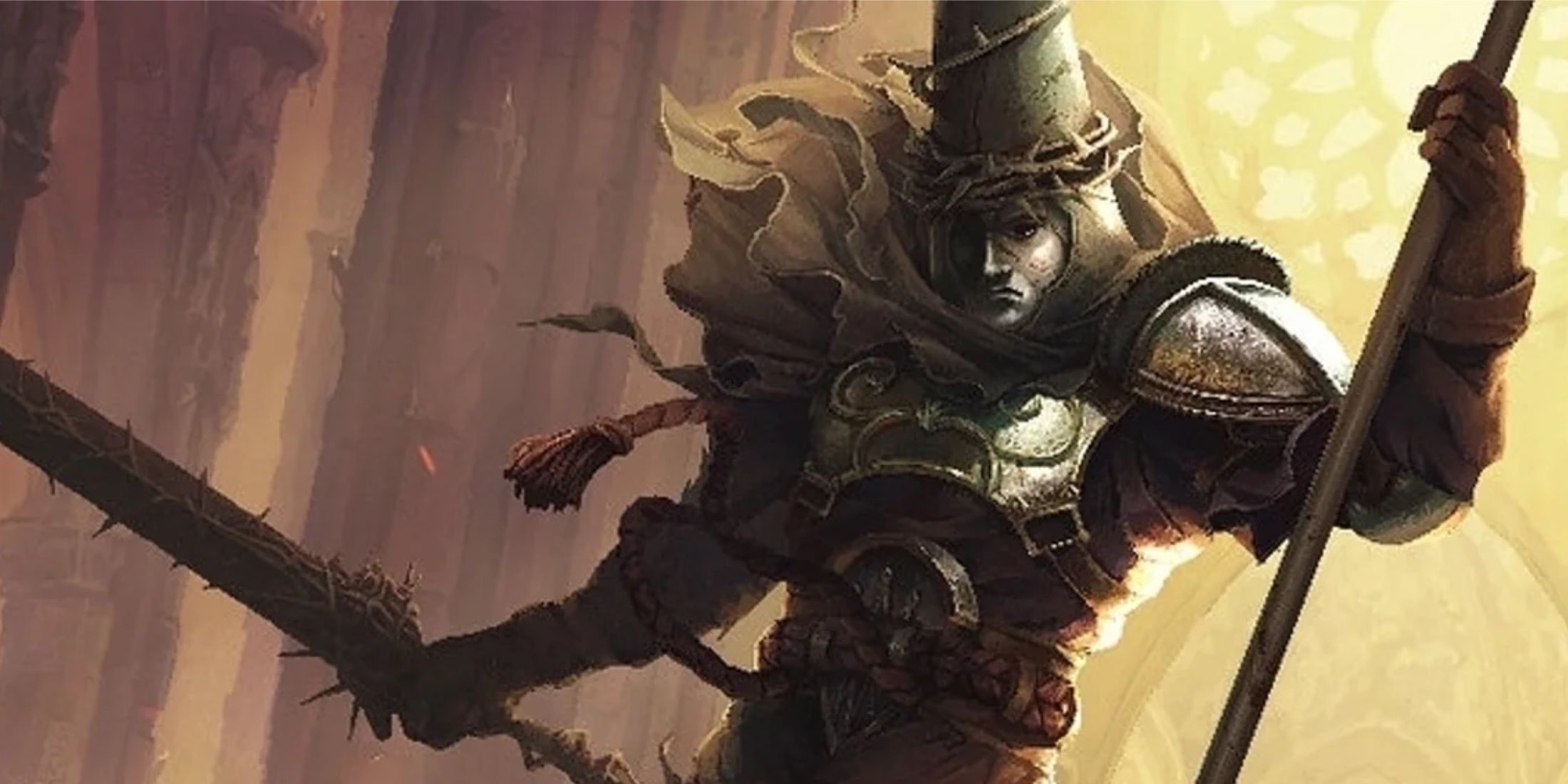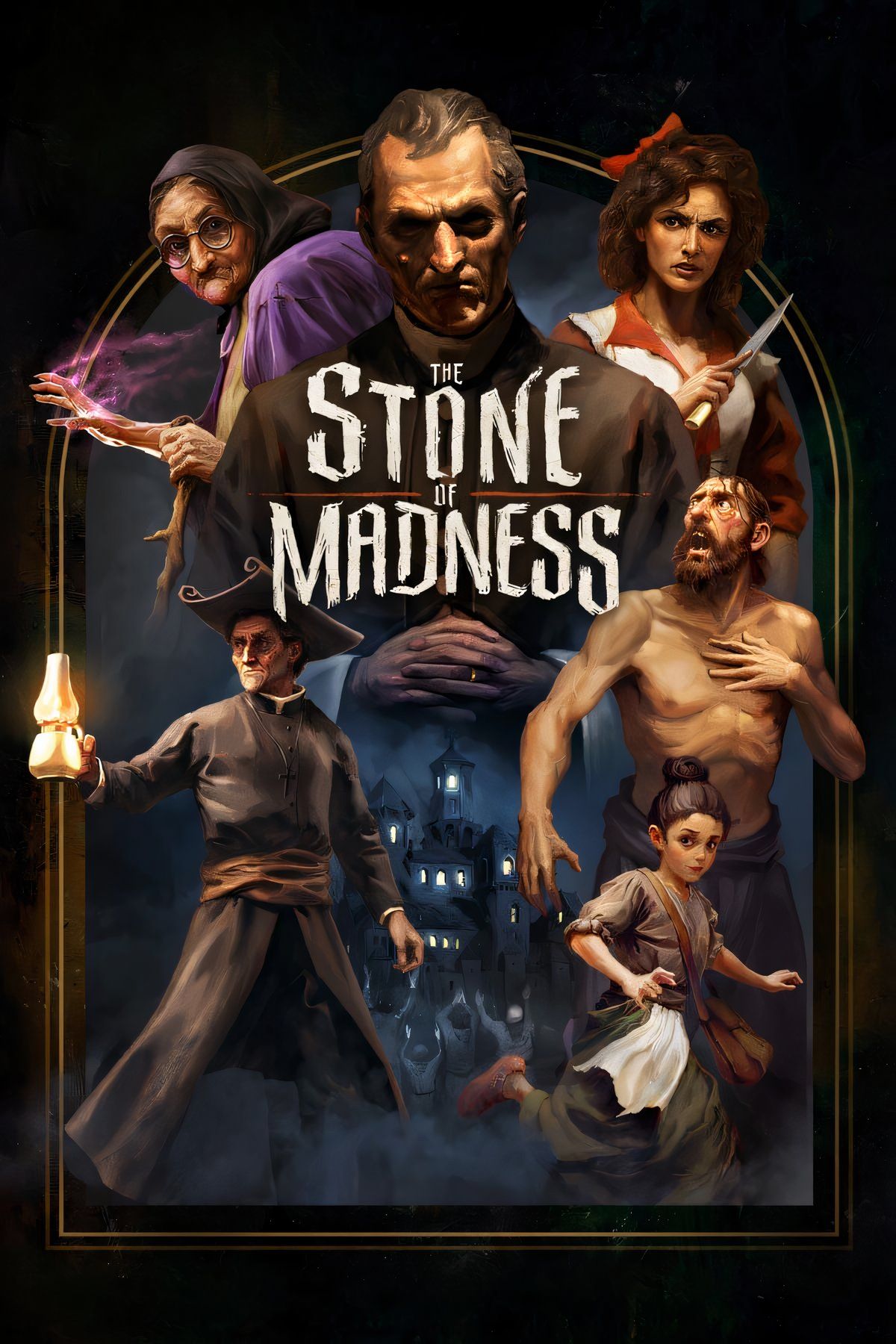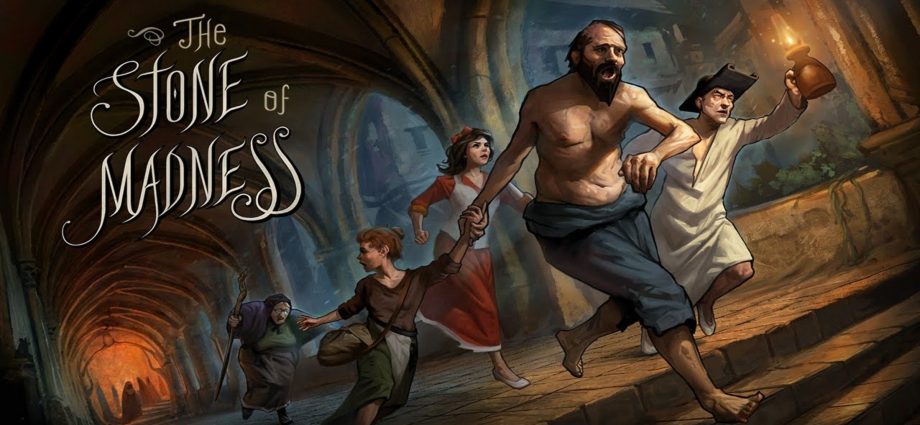The Game Kitchen’s The Stone of Madness takes inspiration from all over Spanish culture in its art. A particularly good example of this would be the real-life locations The Stone of Madness takes inspiration from, including many historical Spanish monasteries.
Isometric strategy title The Stone of Madness was released earlier this year, and it’s caught a great deal of attention thanks to its strong art direction. As soon as gameplay starts, players are treated to the gorgeous innards of 18th-century Spanish architecture. These backgrounds are realized with painterly strokes and with incredibly naturalistic hues, complementing the animated characters. The Game Kitchen has given Game Rant an exclusive look at how the game’s setting was brought to life, including info on the real locations that shaped the look of The Stone of Madness.

Related
Blasphemous 3 is Stuck Between a Rock and a Hard Place
Blasphemous 3 has yet to be announced, but whatever developer The Game Kitchen decides to do next will leave the game at a crossroads.
The Real Monasteries That Inspired The Stone of Madness
The setting of The Stone of Madness, an isolated Spanish monastery in the Pyrenees, is key to the game’s makeup. Not only does the monastery function as a religious institution wrought with corruption, but that corruption materializes in the oppression of the mentally ill and political dissidents, with the monastery hiding an abusive asylum and an inquisitorial prison. To truly realize this key location, the team took inspiration from a number of real Spanish monasteries, as discussed by the team in this exclusive peek behind the curtain.
Monastery of Yuste
One of the monasteries cited by the team in an exclusive article provided to Game Rant is the Monastery of Yuste, which was founded in 1402 and sits in the Spanish municipality of Cáucos de Yuste. The monastery was burned to ruins in 1809 before being restored in 1949, and it served as one of the stops the Stone of Madness team took on their research trip across Andalusia and Asturias. In the team’s article, it’s mentioned that many areas within the game’s monasterial asylum were directly taken from sites visited during this research. In particular, the Monastery of Yuste’s refectorium was lifted from real life and realized in-game as an aspect of the original setting.
While the Monastery of Yuste is situated far away from The Stone of Madness‘ setting in the Pyrenees (a mountain range that lies on the border of Spain and France), it’s nonetheless foregrounded by rural, hilly terrain—and its architecture, such as with the aforementioned refectorium, greatly informs the game’s visuals. Moreover, the location’s history reflects the isolation and secrecy at the core of The Stone of Madness, with the Monastery of Yuste being best known as the final resting place of Charles V. The former Holy Roman Emperor and King of Spain retired to the monastery following his abdication, seeking the locale out for its reclusive qualities.
Monastery of Santo Estevo de Ribas
The other monastery pointed out by the Stone of Madness developers in their article, visited during the same research trip, is the Monastery of Santo Estevo de Ribas. This monastery also exists within an isolated area, and its architecture is a great fit for the gothic storytelling of Stone of Madness. The developers highlighted the monastery’s cloisters, of which it has three—one of which is explicitly Gothic in design.
The story of Stone of Madness, focusing on madness, corruption, and the perversion of religious institutions, is very much in the vein of gothic fiction. While the team recognized these gothic overtones, they also asserted that “narratives centered on mental illness tend to be set in either the modern era or Victorian times.” Further, the team added that “For us, the monastery offered a far more striking image—a monumental structure that would become etched in the player’s memory as the true protagonist of the experience. Moreover, its religious connotations opened up a vast array of narrative possibilities, especially when exploring themes deeply rooted in Spanish culture.”

The Stone of Madness
- Released
-
January 28, 2025
- ESRB
-
Mature 17+ // Violence, Blood, Sexual Content, Nudity
- Developer(s)
-
The Game Kitchen
- Engine
-
Unity
- Steam Deck Compatibility
-
Unknown

